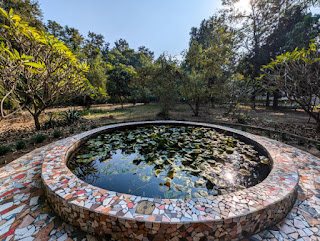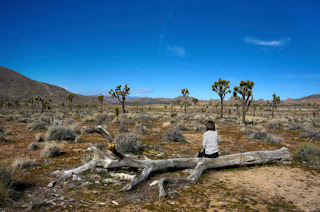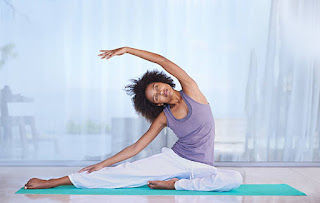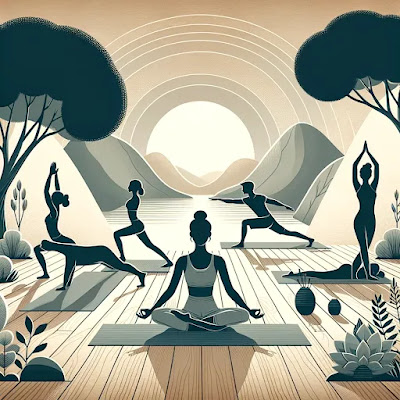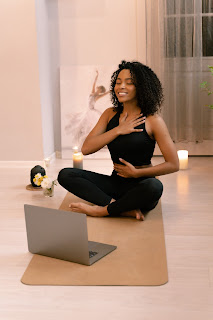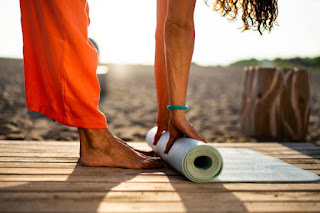From Chaos to Calm: A Guide to Using Meditation and Yoga for Balance
In our lives, change is as inevitable as the rising and setting of the sun. Yet, even with this knowledge, certain life events, like moving homes, can stir up a storm of emotions and stress that many find overwhelming. My recent move from Phoenix to Vegas was a testament to this fact. Unlike the simpler transitions of my youth, relocating an entire household introduced me to a new level of chaos I hadn’t anticipated. Amidst the whirlwind of packing boxes and adjusting to a new city, I found solace in an unexpected place: the ancient practices of yoga and meditation.

For many in my age group, the concept of balance often feels like a luxury we can’t afford, especially during significant life changes. However, through this personal upheaval, I discovered that yoga and meditation aren’t just exercises for physical and mental wellness; they’re essential tools for navigating life’s tumultuous waters. This guide isn’t merely about the poses or the breathing techniques; it’s a narrative woven from my experience, offering a beacon of hope for anyone seeking serenity in the midst of life’s storms.
Join me as I share the journey from chaos to calm, revealing how the disciplined practices of yoga and meditation can anchor us firmly in balance, regardless of the upheaval around us. Whether you’re moving homes, changing jobs, or simply seeking tranquility in a chaotic world, this guide aims to show you the way to inner peace and stability.
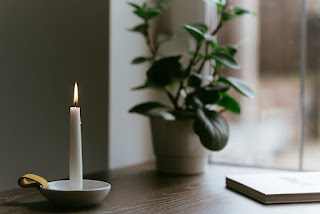
Understanding Stress and Transition
When we think of moving, the first images that come to mind are often physical—boxes, moving trucks, and the new spaces we’re heading to. Yet, beneath the surface of this physical upheaval lies a profound emotional and psychological journey. Moving, especially from a familiar place to an unknown one, can trigger a significant amount of stress, akin to starting a new chapter without knowing what the story holds.
Stress, in its essence, is the body’s response to any change that requires an adjustment or response. The human body is designed to experience stress and react to it. Stress can be positive, keeping us alert, motivated, and ready to avoid danger. However, stress becomes negative when a person faces continuous challenges without relief or relaxation between stressors. As a result, the individual becomes overworked, and stress-related tension builds.
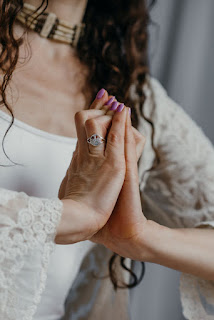
The experience of moving from Phoenix to Vegas brought to light the multifaceted nature of stress. It wasn’t just the packing or the physical logistics; it was saying goodbye to familiar comforts, the apprehension of new beginnings, and the uncertainty of fitting into a new community. This transition period is a fertile ground for stress because it touches on fundamental aspects of our identity and sense of belonging.
Yoga and meditation offer a bridge over these turbulent waters. They provide tools not just for managing stress but for understanding our responses to it. Yoga, with its emphasis on breath and movement, teaches us to physically navigate stress, grounding us in our bodies. Meditation, on the other hand, offers a mental respite, a chance to quiet the mind and observe our thoughts and reactions without judgment.

Integrating these practices into daily life during a significant transition can transform the experience. Instead of being swept away by the current of change, yoga and meditation enable us to ride the waves, acknowledging the stress and using it as a catalyst for growth. This section will delve into how these ancient practices can be applied to modern-day transitions, providing a solid foundation for anyone facing the tumult of change.
Basics of Yoga for Stress Relief
In the throes of a significant life event, such as moving from one city to another, it’s easy to feel like stress is an uncontrollable force, a tidal wave crashing over our plans and well-being. Yet, an empowering truth remains: much of our stress response is within our control. Despite the absence of immediate physical danger, our bodies can trigger a stress response, catapulting us into a state of heightened alertness and anxiety over perceived threats. This response, deeply ingrained in our biology, often overlooks that the saber-toothed tigers of the past are now the deadlines, decisions, and life changes of the present.
Understanding this, we recognize that what we focus on significantly shapes our experience. If we dwell on the potential mishaps and uncertainties, our bodies mirror this tension, preparing for threats that are more psychological than physical. Conversely, if we choose to ground ourselves in the present and focus on the manageable aspects of our situation, we can guide our bodies back to a state of calm.

Yoga emerges as a powerful ally in this endeavor. At its core, yoga is more than physical exercise; it’s a practice of mindfulness that teaches us to unite body, mind, and breath. Through yoga, we learn to pay attention to our moment-to-moment experience, cultivating an awareness that allows us to identify stressors and consciously shift our focus towards balance and peace.
Controlled Breathing (Pranayama):
Central to yoga is the practice of pranayama, or controlled breathing. This practice directly influences our nervous system, moving us from the fight-or-flight response of the sympathetic nervous system to the rest-and-digest calm of the parasympathetic nervous system. Simple techniques, such as the Ujjayi breath, encourage slow, steady breathing, signaling to the body that it’s safe to relax.
Mindful Movement:
Yoga poses (asanas) offer a dual benefit: they strengthen and relax the body, while the required concentration and focus divert our attention from stressors, anchoring us in the present. Poses like the Child’s Pose or the Warrior series not only release physical tension but also remind us of our resilience and capability to face challenges.
Meditation and Reflection:
Integral to yoga is the practice of meditation, a time to sit with our thoughts without judgment. This practice can start with just a few minutes each day, focusing on the breath or a mantra as a way to bring awareness to the present, diminishing the hold of stress and anxiety.
Yoga Nidra:
Also known as yogic sleep, Yoga Nidra is a form of guided relaxation that brings you to the edge of sleep, profoundly relaxing the mind and body. It’s particularly effective for those undergoing stress from life transitions, as it helps to reset the body’s stress response.
Incorporating these yoga fundamentals into your daily routine doesn’t require hours of commitment. Even a few minutes each day can make a significant difference in managing stress and reorienting your focus towards positivity and peace. By choosing to focus on the present and the power within us to shape our stress response, we reclaim control over our experience, turning chaos into calm.
Meditation Techniques for Inner Peace
While yoga provides a harmonious blend of body and breath work, meditation invites us into the depths of our minds, offering a sanctuary of peace amidst the outer chaos. It’s a profound tool for those navigating significant life changes, such as moving homes, as it empowers us to maintain a serene core, regardless of external circumstances. Understanding and practicing meditation can turn the tumultuous process of adaptation into a journey of self-discovery and inner stability.
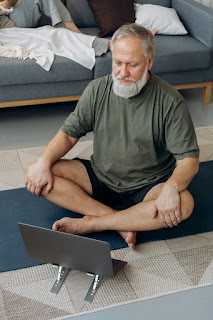
Mindfulness Meditation:
This technique encourages us to observe our thoughts and feelings without judgment, acknowledging them as fleeting and not defining of our true selves. By focusing on the present moment—whether it’s through the sensation of breath, the sounds around us, or the feeling of the ground beneath us—we learn to detach from the whirlwind of stress and anxiety. This practice can be particularly grounding during the uncertainty of a move, reminding us that, like our thoughts, this phase is temporary and will pass.
Loving-Kindness Meditation (Metta):
Transition periods often stir up feelings of isolation or disconnection. Metta meditation counters these emotions by fostering a sense of compassion and openness. Starting with ourselves and gradually extending to others, this practice involves silently repeating phrases of goodwill and kindness, such as “May I be happy, may I be safe, may I live with ease.” This form of meditation not only reduces stress but also enhances our feelings of connection and empathy, invaluable during times of change.
Guided Visualization:
Sometimes, the unknown is the most daunting aspect of change. Guided visualization helps by allowing us to mentally rehearse positive outcomes and peaceful scenarios. Through guided meditation sessions, either in person, through apps, or online, we can visualize ourselves adapting successfully to our new environment, creating a sense of calm and preparedness for the challenges ahead.
Mantra Meditation:
The repetition of a mantra, a sound, word, or phrase, can act as an anchor, bringing our focus back when our mind wanders. This technique is helpful for quieting the incessant chatter of the mind, offering a respite from the stress of moving and settling into a new place. Mantras such as “So Hum” (I am that) or even simple affirmations tailored to your experience can provide comfort and clarity.
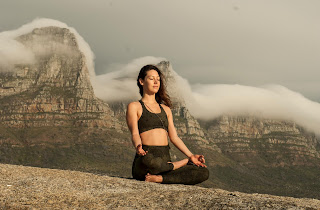
Walking Meditation:
Meditation doesn’t always have to be stationary. Walking meditation combines mindfulness with gentle physical activity, ideal for those moments when sitting still feels too restrictive. As you walk, focus on the sensation of each step, the rhythm of your breath, and the sights and sounds around you. This practice can be especially beneficial in getting to know your new neighborhood, transforming a routine walk into an exercise in mindfulness and familiarity.
Incorporating these meditation techniques into your daily life can significantly alter your response to stress, transforming it from a wave that threatens to overwhelm into a challenge that you navigate with grace and awareness. As we learn to focus on the present and cultivate inner peace, we find that the external chaos diminishes in power, allowing us to approach life’s transitions with a calm mind and a resilient spirit.
Integrating Yoga and Meditation into Daily Routine
The journey from chaos to calm is not a path walked overnight. It requires the weaving of new habits into the fabric of our daily lives. For those of us navigating the tumult of major life changes, such as moving to a new city or adjusting to a new phase in life, incorporating yoga and meditation into our daily routine can seem daunting. Yet, the beauty of these practices lies in their flexibility and adaptability to fit into our unique lifestyles.

Start Small:
Begin with just a few minutes a day. A ten-minute morning meditation or a few yoga stretches before bed can significantly impact your stress levels and overall sense of balance. The key is consistency, not duration.
Create a Dedicated Space:
Designate a specific area in your home for your practice. It doesn’t have to be large or elaborate; a small, quiet corner where you can roll out a yoga mat is enough. This creates a physical and mental space dedicated to your wellbeing.
Incorporate Practice into Breaks:
Use short breaks during the day for a quick meditation or a couple of yoga poses. This not only breaks up the monotony of daily tasks but also injects moments of peace and mindfulness into your routine.
Make Use of Technology:
Leverage apps and online resources for guided meditations, yoga classes, and mindfulness exercises. These resources can provide structure for beginners and variety for those more advanced in their practice.
Involve Your Community:
Share your practice with friends or family members who are also interested in yoga and meditation. This can include attending classes together, sharing tips, or simply discussing your experiences. Building a community around your practice can offer support and motivation.
Be Flexible with Your Practice:
Some days, you might have time only for a brief meditation or a couple of yoga poses, and that’s okay. The goal is to maintain a regular practice, but be kind to yourself and adjust as needed based on your daily demands.
Reflect on Your Journey:
Regularly take time to reflect on how your practice is affecting your life. Notice any changes in your stress levels, mental clarity, and overall sense of balance. This reflection can serve as a powerful motivator to continue.
Apply Mindfulness Beyond the Mat:
Try to carry the mindfulness cultivated during yoga and meditation into other aspects of your life. This might mean eating mindfully, listening more attentively, or simply being more present in your daily interactions.
Transitioning through major life events, like moving to a new city, brings its set of challenges and stressors. Yet, by integrating yoga and meditation into our daily routines, we equip ourselves with powerful tools to navigate these changes with grace and resilience. These practices teach us to remain anchored in the present, even as the world around us shifts, helping us transform our experience of chaos into one of calm and balance.
Conclusion: Embracing Change with Grace
As we journey through life, change is the only constant. From the exhilarating moments of new beginnings to the unsettling times of transition, each phase brings its own set of challenges and opportunities for growth. My move from Phoenix to Vegas, a significant milestone filled with both excitement and uncertainty, reminded me of the profound impact that yoga and meditation can have on navigating life’s changes.
Incorporating these ancient practices into daily life isn’t just about alleviating stress or finding temporary relief. It’s about fundamentally transforming how we experience change, turning potential turmoil into an opportunity for inner growth and stability. Yoga and meditation teach us to meet change with a sense of presence, openness, and balance, allowing us to move through life with a calmer, more grounded perspective.

This guide, woven from personal experiences and practical advice, aims to be a beacon for anyone finding themselves amidst life’s storms, seeking a haven of balance and peace. Whether you’re moving homes, changing jobs, or simply looking for ways to bring more tranquility into your daily routine, remember that the power to navigate these changes with grace lies within you. By embracing yoga and meditation, you’re not just coping with life’s transitions; you’re transforming your entire approach to them, finding balance in chaos and serenity amidst the storm.
As we close this chapter, I encourage you to take the first step on this path of transformation. Begin small, be consistent, and remain open to the journey ahead. With each breath and movement, remind yourself that you are capable of navigating change with grace, equipped with the timeless tools of yoga and meditation. Embrace these practices not just as exercises for the body or mind, but as lifelong companions on your journey toward balance, peace, and resilience.
